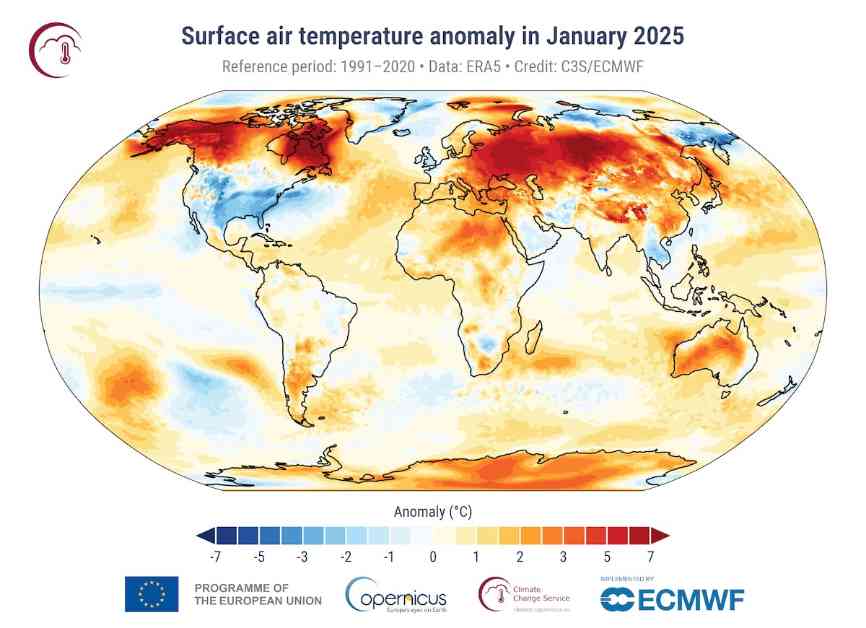In a surprising turn of events, January 2025 has been declared the warmest January on record by the EU Copernicus Climate Change Service. Climate scientists were taken aback by the data, as they had anticipated a slight cooling trend following the end of the El Niño weather pattern and the emergence of the La Niña weather pattern.
The average air surface temperature for January 2025 was recorded at 13.23 degrees Celsius (approximately 55.8 degrees Fahrenheit), surpassing the previous record set in January 2024 by 0.09 degrees Celsius. This spike in temperature also marked a notable 1.75 degrees Celsius increase from the average January temperatures from pre-industrial times, highlighting a concerning trend in rising temperatures.
Unforeseen Climate Trends
The unexpected warmth in January 2025 contradicted scientists’ predictions, who had anticipated a cooling effect due to the transition from El Niño to La Niña conditions. Adam Scaife, head of Monthly to Decadal Prediction at the UK Met Office, expressed his surprise at the deviation from the expected trend, emphasizing the unpredictability of climate patterns.
The persistence of high temperatures in January 2025 underlines the urgency of addressing climate change and its far-reaching implications. The unanticipated rise in temperatures poses a critical challenge for climate scientists and policymakers striving to mitigate the impacts of global warming.
Impacts on Polar Regions
The repercussions of record warmth were also felt in the polar regions, with Arctic sea ice hitting a monthly low for January, falling approximately 6% below average levels. Similarly, Antarctic sea ice experienced a 5% decrease from the average, although it did not reach the alarming lows observed in previous years.
Samantha Burgess, strategic lead for climate at the European Centre for Medium-Range Weather Forecasts (ECMWF), highlighted the concerning trend of rising temperatures despite the onset of La Niña conditions. The delicate balance of ocean temperatures and their influence on global climate patterns underscores the need for proactive measures to address climate change.
As the Copernicus Climate Change Service continues to monitor ocean temperatures and climate trends throughout 2025, the urgency of implementing sustainable practices and reducing carbon emissions remains paramount. Burgess emphasized that while natural phenomena like La Niña may have temporary effects on global temperatures, the primary driver of climate change remains the burning of fossil fuels.
The record warmth observed in January 2025 serves as a poignant reminder of the pressing need to prioritize environmental conservation and adopt eco-friendly practices. As we navigate the complexities of a changing climate, it is imperative to take decisive action to safeguard the planet for future generations.














